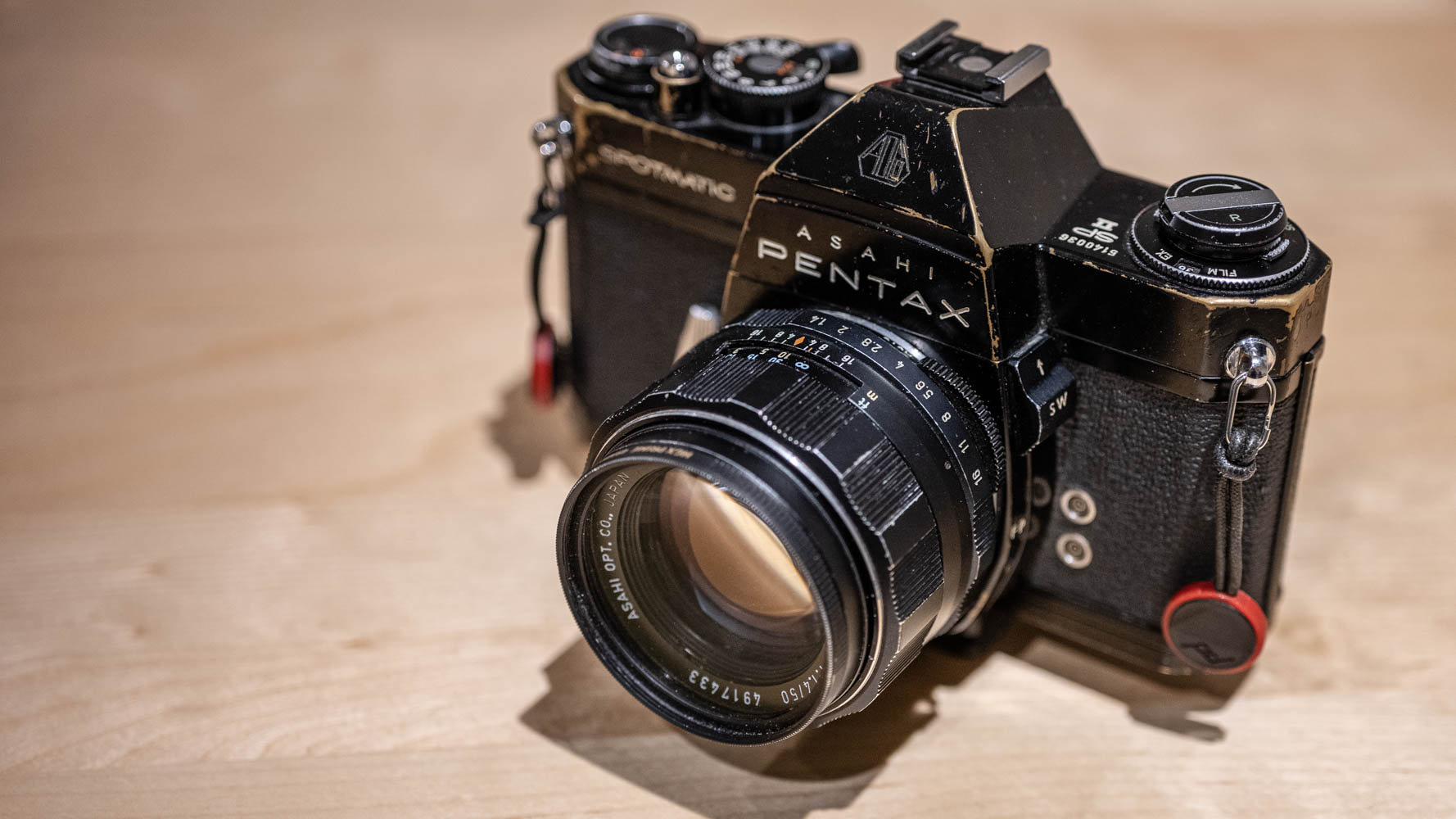I’ve used dozens of film cameras over the years. 35mm, medium format, even 4×5, from the likes of Nikon, Canon, Pentax and Mamiya. Each of them all have their quirks and dare I say, personality. But more often than not I find myself coming back to the camera which I started my film adventures on: the SP2.
On the surface, it looks like any other SLR from the 60s and 70s: no noticeable grip, a single dial for shutter speed, prism on the middle and the film crank on the shoulder. So what is there to like more than the Nikon F2, or the Canon AE-1?
Well… Not much to be honest.
There is no insert for the film box, the meter uses illegal mercury batteries, and to my grand deception there is no double exposure mode. But still, it’s so much more than that.
Like most Japanese SLR’s of the era, it’s very simple to use, it’s reliable, and lenses can be found pretty cheap online. And speaking of which, the SP2 has a trick up its sleeve. The M42 mount. What this means is that I can take pretty much any Japanese, German or Soviet lens, and screw it on the camera, simple as that.
If I want to use my lovely Takumar 50mm f/1.4, I can do it. The classic Helios 44? Yup. What about the dirt cheap Takumar 28mm f/3.5 (underrated gem by the way) for portraits or street? It all fits.
Using the camera
The camera has essentially 5 controls, like any good vintage camera.
- Shutter speed dial
- Aperture ring
- ISO/ASA dial
- Advance lever
- Light meter switch
There are more, but these are the ones you’ll be using daily, along with the rewind release and crank.
And while it does lack an aperture-priority mode, it’s surprisingly easy to adjust, even in the rush of street photography. What’s more, the microprism in the center of the viewfinder is easier to use than the microprism found in more recent SLR’s, such as the FM and AE-1. My guess is that it was less expensive to make the split-view, because it doesn’t work in all situations, usually when the lines are horizontal. This is why most companies made interchangeable 45 degrees screens. But on the SP2, you can focus on just about anything, provided you have a lens that isn’t slower than f/2.8.
Lenses
Oh boy, here I go again.
You can’t not find a lens for this camera that you won’t like. It has everything!

You need the absolute fastest lens possible? You could get the Yashinon 5mm f/1.2, or be sensible and get the Takumar 50mm f/1.4. For razor sharpness, even wide open, the Takumar 55mm f/1.8 will do the trick if you know how to focus. For an unique image, the Mir-1SH or Helios 44 will provide the distinct Soviet lens look, without having to work with a quirky Russian body. M42 is usually the mount that the most distinctive lenses come in, it can be easily adapted on most DSLR’s, and it’s a joke to adapt on mirrorless, such as Nikon Z, Sony E or Canon RF.
But I digress here. The camera will take just about anything, and will meter with it since it’s stopped down metering. This can be seen as an inconvenient, but in my opinion it’s what makes this camera so versatile and dependable.
Final word
I love this camera. It does everything I ask it to, without a whine other than the slap of the mirror. It’s an extension of your body, after a while it becomes second nature. When I said that each camera has it’s own personality, I meant it. I’d lie if I said that she was always absolutely perfect, like clockwork, every time.
But that’s not why we shoot film, isn’t it?
I suggest you can one if you can find one. You won’t regret it.
